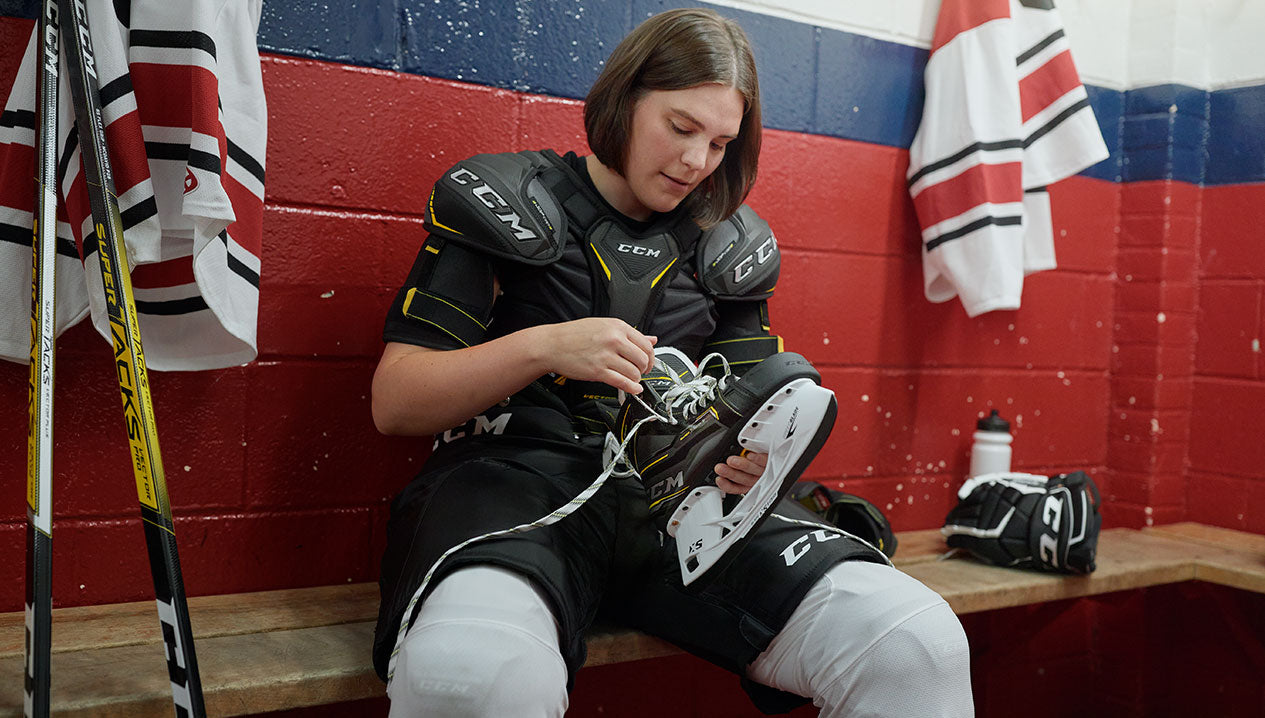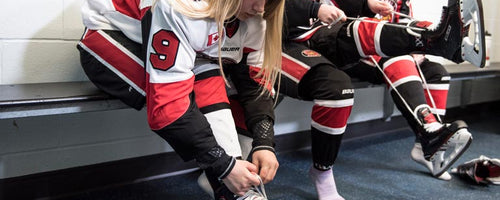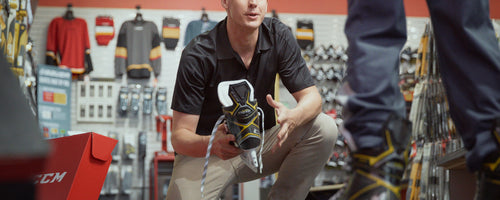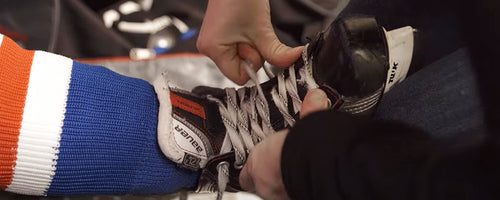Skate Sharpening Tips
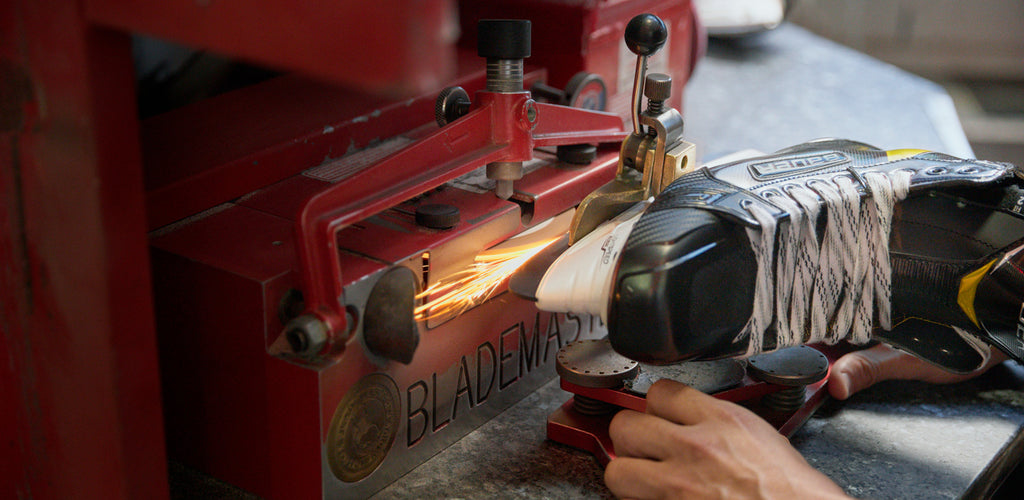
Radius of Hollow, Even Edges & Quality of Finish Will Help Your Hockey Game
In hockey, skating is everything – and a poor sharpening will certainly hurt your game. The Precision Balance custom sharpening system is designed to produce a consistent sharpening every time. This ensures that your skates are being sharpened for your skill level and style of play, to increase your performance on the ice.
Skate sharpening is an art that takes time to master. Our skilled skate sharpening specialists have the knowledge and training to create a precision edge on your blade, ensuring that you have the performance that you need from your skate, no matter what level you play.
Here are explanations of some of the common terms that refer to how a skate is sharpened:
Hollow Explained
Skate blades are not flat. A hollow or ‘U’ shape is ground into the blade to create a right and left edge. The deeper the hollow or U shape, the sharper a skate feels. The following are common sharpening measurements in order of deepest to shallow: 1/4, 3/8, 7/16, 1/2, 5/8.
A sharper skate will give you more bite but less glide.
Flat Bottom V
Rather than being a ‘U’ Shape hollow, the FBV has a flat bottom and ‘V’ shaped sides. This shape allows the skate more bite without sacrificing the ability to glide. Because the blade does not penetrate the ice as deeply, there is less chance of catching an edge, reducing the chances of falling during transitions for less experienced or less skilled skaters. There is also reduction of the twisting forces applied to knees, which means less wear and tear on the joints.
Contouring
Also referred to as ‘Rockering’, contouring is the actual shaping of the blade. This allows different lengths of the blade making contact with the ice. The more contact with the ice, the greater amount of glide. The lesser amount of contact creates the ability to turn sharper (smaller radius). The goal is to create a balance between glide and turning radius, custom designed for the individual skater. Examples of common radius measurements, from the most amount of glide (or contact) to the least (or sharpest turning radius), are 13’, 11’, 9’, 7’.
Cross Grinding
This is a process that brings the blade back to a flat reference. It is a technique that is used to remove damage done to the blade such as nicks or poor levels.
Don’t settle for just any sharpening! Get your skates sharpened at any of our local hockey stores and experience the best custom skate sharpening and skate sharpening service in Canada to elevate your game.
For expert advice on hockey gear and equipment that is right for your game, level of play, and budget, come see us at your local Source for Sports hockey store near you. We Fit Your Game.
Join Source Nation to get the latest news on product launches, Source Exclusive product lines, tips and tricks for parents and players, and more!
